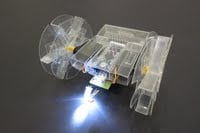RobotLAB Blog
Everything You Need To Know About Robotics in Businesses
NASA thinks 3D printing is good enough for the space station, now how about your classroom?
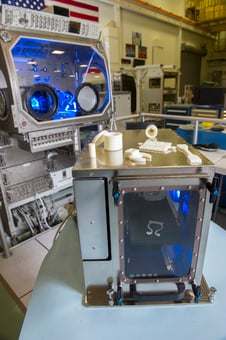
Building spaceships in space, that is the promise of 3D printing! Of course additive manufacturing technology of that magnitude remains far in the future, but the future begins this August when the first 3D printer, built by Made In Space and tested for safety and operational requirements, Al, is lifted to the International Space Station (ISS).
The orbital test of Made In Space’s 3D printer is part of the "3-D Printing in Zero-G Technology Demonstration" project. This project is part of a competitive Small Business Innovation Research (SBIR) program which encourages domestic small businesses, with government financial assistance, to engage in research and development that might prove profitable while advancing high-tech development in the US."Throughout our partnership with Made In Space, we have helped prepare the printer to work in an environment that is literally out of this world," said Niki Werkheiser, 3-D print project manager at Marshall Space Flight Center. "NASA engineers have a vast amount of experience designing and certifying hardware to operate in space. We were happy to share that knowledge with Made In Space. As a result, the hardware passed testing with flying colors."
- 0 Comments
- Jun 26, 2014 12:00:00 PM
- Posted by Brendan Barnard
- Topics: 21st Century Classroom, International News
Meet Pepper, the robot who might become your best friend
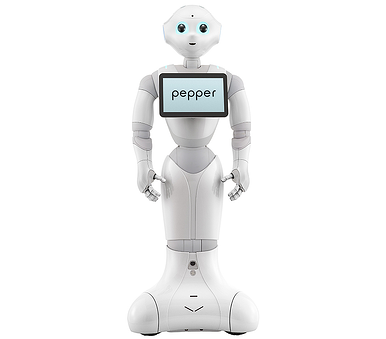
“If you want a friend in Washington, get a robot.” The Internet seems unsure of the origins of the much older phrase, "If you want a friend in Washington, get a dog." Either way, for the first time, it has become possible to get a robot if you want a friend.
Her name is PEPPER. PEPPER stands 48 inches tall and weighs 62 pounds. French robot developer Aldebaran designed the robot for Japanese mobile operator Softbank. Aldebaran, as you might be aware, is also the developer of the most widely distributed robot ever made, NAO. In fact, PEPPER looks like a taller NAO on a wheeled pedestal instead of two articulated legs.
- 0 Comments
- Jun 12, 2014 2:10:00 PM
- Posted by Charles Nimrad
- Topics: Robotics, NAO, International News
Soccer + robots = A winning combination! RoboCup 2014 is coming
This year the Soccer World Cup will be played in Rio de Janeiro, Brazil. The crowds, as always, will be huge. After all, everyone wants to go to Rio de Janeiro and a World Cup is as good an excuse as any. The first game will be on Thursday, June 12th, between Brazil and Croatia. Those of you who dislike crowds might want to miss this competition; but don’t worry, if you’re looking for an excuse to boogie on down to Brazil there is an even more important soccer event occurring a month later a little north of Rio in João Pesso. I'm referring, of course, to RoboCup 2014 -- the Robot Soccer World Cup!
Actually, João Pessoa is more than a little north of Rio -- 1,223 miles north, to be precise. But that means three hours less flying time in a cramped airplane seat. And if you can believe the image on the Internet, João Pessoa appears to be on a bay as beautiful as Rio’s. More, it’s reputedly a safe city...a claim Rio de Janeiro certainly can’t make!
- 0 Comments
- Jun 9, 2014 12:58:15 PM
- Posted by Charles Nimrad
- Topics: Robotics, EdTech, 21st Century Classroom, International News, Project Based Learning
Think you can build a super-affordable, super-awesome educational robot?
The African Robotics Network (AFRON) and IEEE Robotics and Automation Society (RAS) sponsor one of several worthwhile initiatives designed to interest young people in a technological future, the Ultra Affordable Educational Robot Project Design Challenge. Specifically, their biannual challenge hopes to "collaboratively create an educational robot that is an order of magnitude less expensive than existing products, to inspire young people around the world."
- 0 Comments
- May 16, 2014 12:30:00 PM
- Posted by Charles Nimrad
- Topics: Robotics, STEM, 21st Century Classroom, International News
ROBOTSLAB WINS LAUNCHEDU COMPETITION AT SXSWEDU
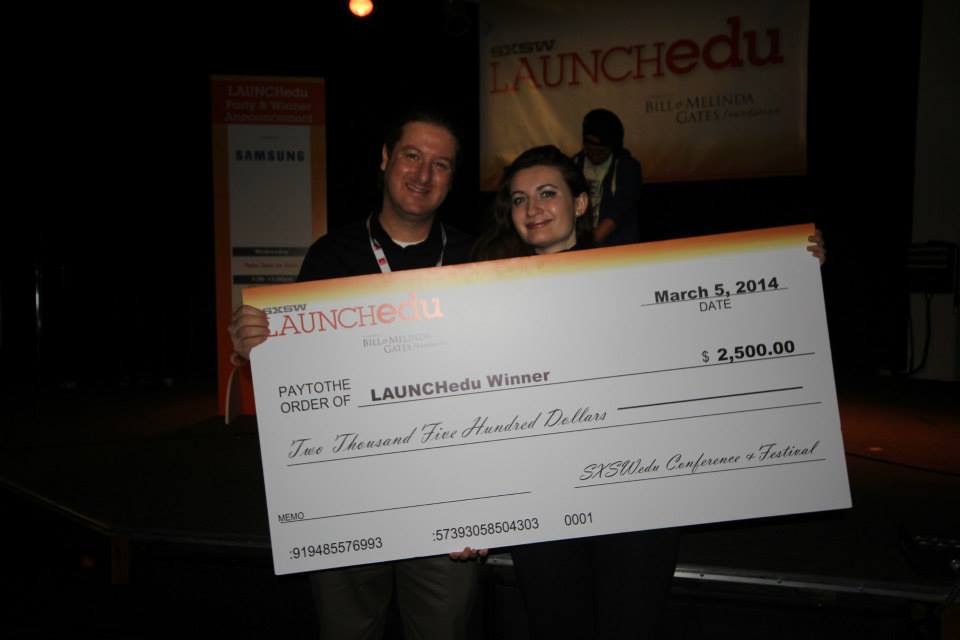
Austin, TX and San Francisco, CA – March 6, 2014 - A handpicked group of distinguished judges representing a cross section of in business, technology and education experts have selected RobotsLAB BOX as the winner of the LAUNCHedu Competition.
The competition began in August 2013 with approximately eighty applications. RobotsLAB was one of ten finalists chosen by the judges to present at SXSWedu on March 3. Following that presentation, RobotsLAB was one of three companies to be selected as a finalist. The final presentation was made in front of judges and a jam-packed room of educators on the morning of March 5. As part of the Educator Insights panel that discussed all ten competing companies, all three panelists cited RobotsLAB BOX as their favorite.
Based on the votes of attendees and judges, RobotsLAB BOX was ultimately chosen as the competition winner at the LAUNCHedu party on March 5. Betsy Corcoran, CEO and Co-Founder of EdSurge presented the award to RobotsLAB CEO Elad Inbar.
- 0 Comments
- Mar 6, 2014 12:13:59 AM
- Posted by Anna Sandler
- Topics: Math, Pre-Calculus, Local News, EdTech, STEM, National News, Education, Awards, 21st Century Classroom, School, Student Engagement, Geometry,, Middle School, algebra,, International News
NAO is the first robot that goes to Mars
On January 18, 2014, Aldebaran’s NAO Robot stood where no robot has gone before, and RobotsLAB was responsible for training his seven human companions in the finer points of his programming. NAO will be the only robot in an analog astronaut crew ascending into the Mars Society’s, Mars Desert Research Station in the the high desert of Utah. Anyone familiar with the high desert can appreciate the analogy--at this time of year the high desert is nearly as barren, dry, sandy and cold as the surface of Mars!
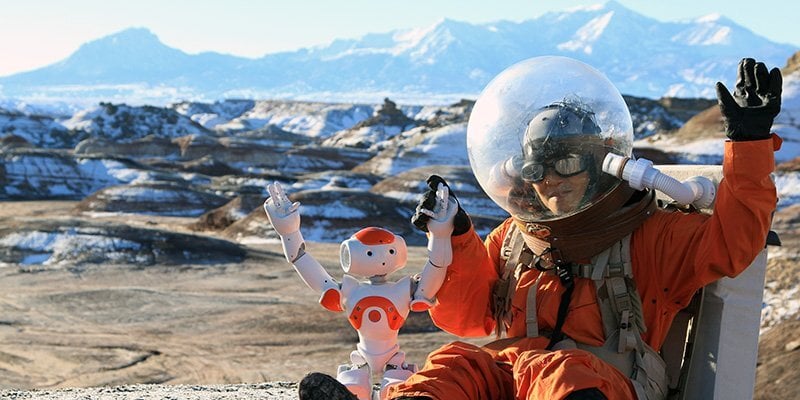
- 0 Comments
- Feb 5, 2014 11:58:00 PM
- Posted by Mike Nardine
- Topics: Robotics, NAO, 21st Century Classroom, International News, space,, Mars,
NAO Robot is not alone anymore - it can learn from his friends!
The great German psychologist Carl Jung believed that a substrata of knowledge existed beneath the consciousness of the individual, a great reservoir of information shared by every member of every species. He called this the vast reservoir of insight, instinct, and a-priori knowledge, the “collective unconscious.” He believed It is always there when needed by the individual seeking answers to questions not provided by his experience.
The existence of the collective unconscious in humans is still being argued over by psychologists and philosophers, but wouldn’t it be great if we really had some way of finding answers to questions outside our experience? You know, like books--and most recently, the Internet.
And what about that most recent addition to the flora and fauna of our planet, the robot? Wouldn’t it only be fair if it too could call upon a reservoir of knowledge beyond its own RAM? The Internet is there as a conduit for this knowledge; now all that is needed is a storage facility.
That storage facility that is actually being tested this week in the Netherlands. It is called RoboEarth and its goal is to see that every individual service robot has a means of identifying and manipulating objects it has never come across before. Service robots are autonomous robots that will someday perform everyday tasks in common human environments like the home and office. These tasks might be as simple as shoveling your snow-covered walk and as challenging as creating a nutritious meal for old guys like me.
- 0 Comments
- Jan 22, 2014 12:30:00 PM
- Posted by Mike Nardine
- Topics: Robotics, International News
The FIRST EUROPEAN MUSEUM ONLY ABOUT ROBOTS OPENS IN SPAIN
Did you know that the largest Robot Museum in Europe is located beneath the Juegetronica games store in central Madrid? When I first stumbled across this interesting bit of robo news I was a little surprised that a continent as technology conscious as Europe would have its biggest robot museum in the basement of a store. In this country we have museums featuring robots in nearly every major city. Most appear sponsored by various universities like The Robotics Institute (RI), a division of the School of Computer Science at Carnegie Mellon University in Pittsburgh, Pennsylvania. We even have them in out-of-the-way but well-known entertainment parks like Wisconsin Dells, deep in the Wisconsin countryside.
I needn't have worried: first of all the Juegetronica is not just some small game shop in a Madrid strip mall-- online images display a game store on steroids; secondly, the owner of the Madrid Robot Museum further described his place as "perhaps the only dedicated robot Museum in Europe outside of universities and training centers where we can see this technology of the future." Which is to say the museum is independent of any big European institution. Maybe a bit like our own Wisconsin Dells? And like Wisconsin Dells, it is a big f
avorite with kids.
- 0 Comments
- Dec 19, 2013 4:30:00 PM
- Posted by Mike Nardine
- Topics: Robotics, International News
Furhat, the Sweden's advanced social robot
In 1950 mathematician Alan Turing introduced what is today called the Turing Test for Artificial Intelligence. According to his paper written at that time titled Computing Machinery and Intelligence, Turing believed that machines would evidence intelligence equal to humans when a human interacting with one could not tell the difference between the machine and another human.
Thus far, at least with humans of average intelligence, there is no danger that the automatons we find ourselves forced to communicate with on various “helplines” will be able to convince us of their humanity. But today’s robotics engineers have not quit trying to be the first to meet Turing’s Test.
Sweden’s Furhat robot is an example of a new approach to the test: not by merely attempting to convince its interrogator of its humanity by means of verbal dexterity, but rather by the added enhancement of displaying human facial expressions.
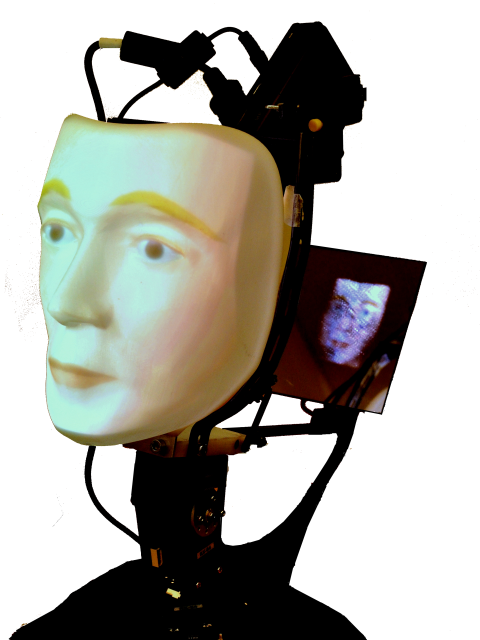
- 0 Comments
- Dec 18, 2013 3:16:00 PM
- Posted by Mike Nardine
- Topics: Robotics, Computer Science, International News
Relevant Posts
- Augmented Reality: A Tool for Teaching Students Robot Programming
- Fostering Innovation Through Youth Education in STEM and EdTech
- How Parents Can Foster STEM Learning Beyond the Classroom
- How Robotics Cultivates a Deep Understanding of Mathematics in Students
- RobotLAB Receives EDTech Chronicle 2023 ‘BESTIE’ Award for Landmark Partnership with American Samoa Dept. of Education.
Subscribe to Email Updates
-
I Want To Learn MoreADDITIONAL INFORMATION

